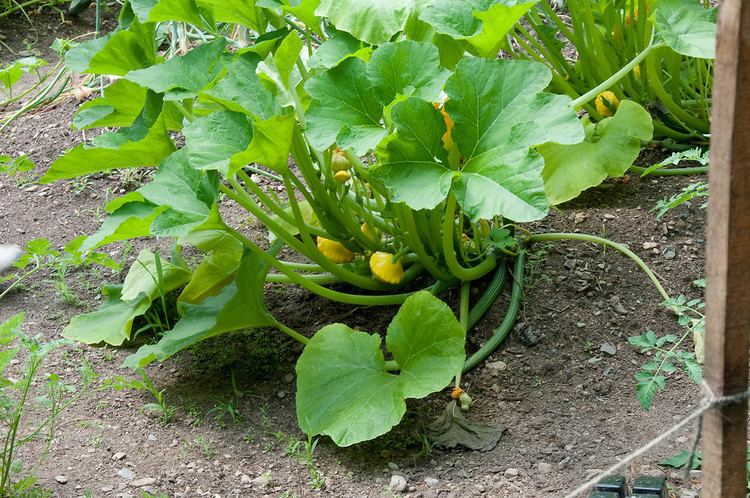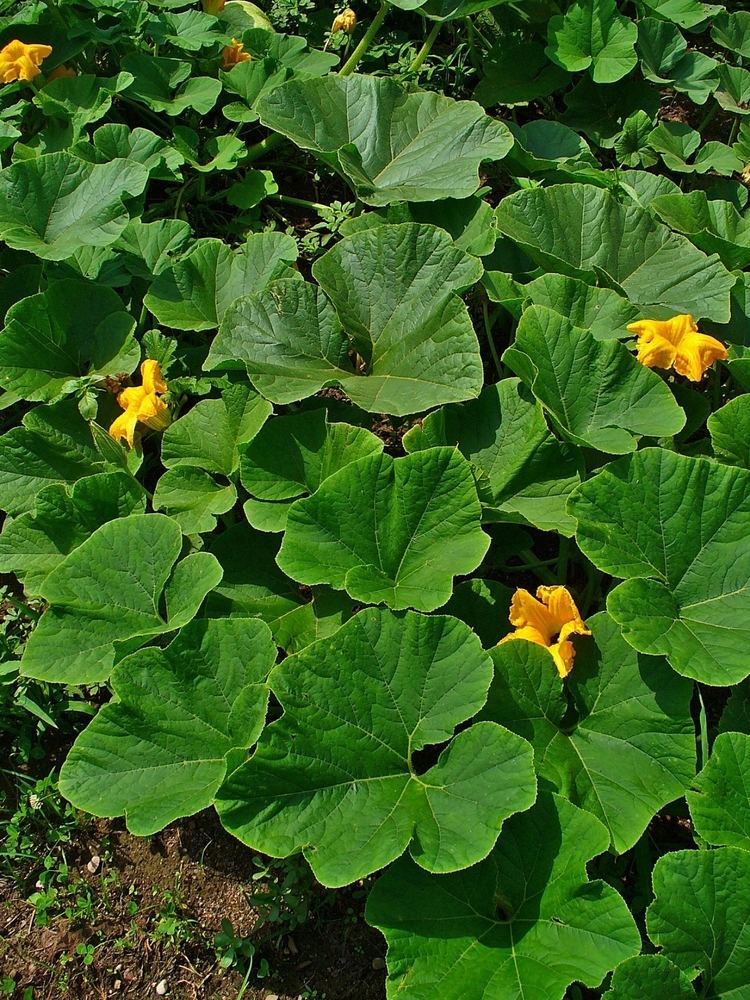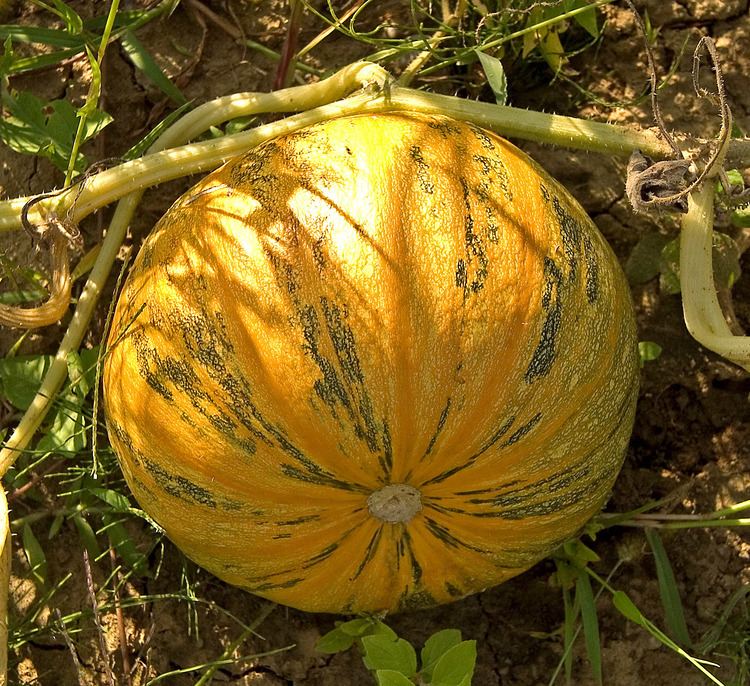Higher classification Squash | Clade Angiosperms Rank Species | |
 | ||
Similar Zucchini, Eggplant, Squash, Wild carrot, Leek | ||
Fruit hunting part 4 wild squash cucurbita pepo sp ovifera
Cucurbita pepo is a cultivated plant of the genus Cucurbita. It yields varieties of winter squash and pumpkin, but the most widespread varieties belong to Cucurbita pepo subsp. pepo, called summer squash.
Contents
- Fruit hunting part 4 wild squash cucurbita pepo sp ovifera
- tatume taste test cutting open the tatume it wasnt easy tatuma
- Taxonomy
- Description
- Cultivars
- Uses
- References

It has been domesticated in the New World for thousands of years. Some authors maintain that C. pepo is derived from C. texana, while others suggest that C. texana is merely feral C. pepo. They have a wide variety of uses, especially as a food source and for medical conditions. C. pepo seems more closely related to C. fraterna, though disagreements exist about the exact nature of that connection, too.
tatume taste test cutting open the tatume it wasnt easy tatuma
Taxonomy

The morphological differences within the species C. pepo are so vast, its various subspecies and cultivars have been misidentified as totally separate species. These vast differences are rooted in its widespread geographic distribution. C. pepo is one of the oldest, if not the oldest domesticated species. The oldest known locations are in southern Mexico in Oaxaca 8,000-10,000 years ago and Ocampo, Tamaulipas, Mexico about 7,000 years ago. Its ancient territory extended north into Texas and up the Greater Mississippi River Valley into Illinois and east to Florida, and possibly even to Maine. It is known to have appeared in Missouri at least 4,000 years ago. Some varieties grow in arid regions and some in moist regions.

Debates about the origin of C. pepo have been going on since at least 1857. Traditionally, two opposing theories are given about its origin: 1) C. pepo is a direct descendant of C. texana and 2) C. texana is feral C. pepo. A more recent theory is that is that C.pepo is a descendant of C. fraterna and hybridized with C. texana; resulting in two distinct domestication events in two different areas: one in Mexico and one in the eastern United States, with C. fraterna and C. texana, respectively, as the ancestral species. C. pepo may have appeared in the Old World prior to moving from Mexico into South America.

It is found from sea level to slightly above 2,000 m (6,600 ft). Leaves have three to five lobes and are 20–35 cm wide. All the subspecies, varieties, and cultivars are conspecific and interfertile. Random amplified polymorphic DNA has proven useful in sorting out the relationships of the C. pepo species, varieties, and cultivars, showing that few, if any, modern cultivars have their origins with C. texana. They are associated with C. fraterna or a still unknown ancestral specimen in southern Mexico.
Wild C. pepo is still found in the same areas as C. fraterna in Mexico. Their isozymes are very similar. C. pepo has more similarities to C. fraterna than it does to C. texana, which is also claimed to be an ancestor of C. pepo. All studied C. fraterna alleles are also found in C. pepo. Consequently, C. fraterna is the nearest relative of C. pepo. C. pepo is most likely an early domesticated form of C. fraterna. It crosses well with both C. pepo and C. texana. Unlike most wild Cucurbita species, some fruit specimens of C. fraterna have been found that were not bitter. Its usual habitat is dry upland scrub areas. C. pepo could be a compilospecies of C. fraterna and C. texana, which appear to be two species that were originally separate. Based on genetic allele analysis, two distinct groups occur within C. pepo: pumpkin, calabaza, criolla, and marrow squash are in one; and ornamental gourds, crookneck, acorn, scallop, and a few others in the second one. C. fraterna is genetically closer to the first group and C. texana is genetically closer to the second group. Ornamental gourds found in Texas are called var. texana and those found outside of Texas (Illinois, Missouri, Arkansas, Oklahoma, and Louisiana) are called var. ozarkana. In a 1989 study on the origins and development of C. pepo, Paris suggested that the original wild specimen was a small round fruit and that the modern pumpkin is its direct descendant. He also suggested that the crookneck, ornamental gourd, and scallop are early variants, and that the acorn is a cross between the scallop and pumpkin.
Several taxa have been proposed, but as of 2012 none has been universally accepted. In 2002, the taxa conventions proposed by Decker-Walters were:
In 1986, botanist Paris proposed a taxonomy of C. pepo consisting of eight edible groups based on their basic shape. All but a few C. pepo cultivars can be included in these groups. These eight edible cultivated varieties of C. pepo vary widely in shape and color, and one inedible cultivated variety:
Description
Due to their varied genetic background, members of C. pepo vary widely in appearance, primarily in regards to their fruits. The plants are typically 1.0-2.5 feet high, 2–3 feet wide, and have yellow flowers. Within C. pepo, the pumpkins, scallops, and possibly crooknecks are ancient and were domesticated separately. The domesticated species have larger fruits and larger yet fewer seeds. Parthenocarpy is known to occur in certain cultivars of C. pepo.
Cultivars
C. pepo includes a wide assortment of varieties and cultivars:
Uses
It is an ingredient in "schumaakwe cakes" and is used externally for rheumatism and swelling. A poultice of seeds and blossoms is applied to cactus scratches. Fresh squash is cut into spiral strips, folded into hanks and hung up to dry for winter use. The blossoms are cooked in grease and used as a delicacy in combination with other foods. Fresh squash, either whole or in pieces, is roasted in ashes and used for food. The gourds made into cups, ladles, and dippers and put to various uses. The gourds are also worn in phallic dances symbolizing fructification or made into ceremonial rattles. Gourds are also made into receptacles for storing precious articles. It is approved for treatment of prostate disorders in Germany.
